On March 11th (2019), a open class to students of the University of Évora about the Continental Laurissilva will be promoted.
Click on the image to enlarge the poster
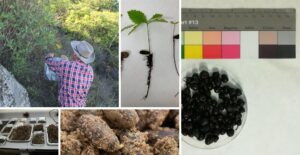 During the months of November and December 2018, thousands of seeds were collected from various plants typical of the Prunus lusitanica and Rhododendron ponticum subsp. Baeticum Communities. . These seeds are found in the CICYTEX nursery to germinate and grow sufficiently, in order to be planted in the Life-Relict project areas (Monchique, Açor and Estrela). The initial difficulties, mainly associated with the germination of the Prunus lusitanica, have been overcome and this year we have a large number of seedlings.
During the months of November and December 2018, thousands of seeds were collected from various plants typical of the Prunus lusitanica and Rhododendron ponticum subsp. Baeticum Communities. . These seeds are found in the CICYTEX nursery to germinate and grow sufficiently, in order to be planted in the Life-Relict project areas (Monchique, Açor and Estrela). The initial difficulties, mainly associated with the germination of the Prunus lusitanica, have been overcome and this year we have a large number of seedlings.
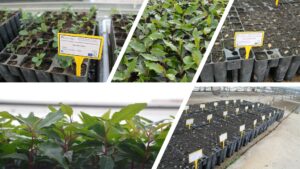 It is fantastic how vigorous the germination of the Prunus lusitanica is. The Rhododendron ponticum seeds have a high germination percentage, however, many of the seedlings are lost due to adaptive difficulties. In this sense, the substrate used is collected directly in the field, thus reproducing the conditions favorable to seedling growth more faithfully. Oak trees, in general, also already show evidence of germination. African oak (Quercus canariensis), White oak (Quercus robur subsp. Broteroana), black oak (Quercus pyrenaica), among others, are already in the mood to show themselves to the public.
It is fantastic how vigorous the germination of the Prunus lusitanica is. The Rhododendron ponticum seeds have a high germination percentage, however, many of the seedlings are lost due to adaptive difficulties. In this sense, the substrate used is collected directly in the field, thus reproducing the conditions favorable to seedling growth more faithfully. Oak trees, in general, also already show evidence of germination. African oak (Quercus canariensis), White oak (Quercus robur subsp. Broteroana), black oak (Quercus pyrenaica), among others, are already in the mood to show themselves to the public.
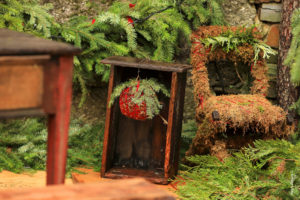 On December 27th, the Estrela Mountain Interpretation Center (CISE in portuguese), which is a Life-Relict partner, and with the support of the Mountain Villages Association, carried out yet another action to disseminate the Project through a tour along the Socalcos route . This route, with about 3 kilometers, integrates the Mountain Routes of the network of hiking trails in the Mountain Villages, developing in a valley with steep slopes and a marked rural character, next to the village of Cabeça (during the event of Aldeia Natal). In this village, housed at the top of a hill overlooking the Loriga stream, the traditional houses are one of the best examples of a typical schist settlement in Estrela Mountain.
On December 27th, the Estrela Mountain Interpretation Center (CISE in portuguese), which is a Life-Relict partner, and with the support of the Mountain Villages Association, carried out yet another action to disseminate the Project through a tour along the Socalcos route . This route, with about 3 kilometers, integrates the Mountain Routes of the network of hiking trails in the Mountain Villages, developing in a valley with steep slopes and a marked rural character, next to the village of Cabeça (during the event of Aldeia Natal). In this village, housed at the top of a hill overlooking the Loriga stream, the traditional houses are one of the best examples of a typical schist settlement in Estrela Mountain.
On the way, there are terraced areas and on the banks of the river, there are woodlan of Portuguese Laurel and holly trees, evidence of the natural vegetation of the valley in times before the last glacial period. Part of the route is part of the study area of the Life-Relict project that intends to preserve the Continental Laurissilva Relics, which, in this region, have as main objective the preservation of the Portuguese Laurel communities that exist here.
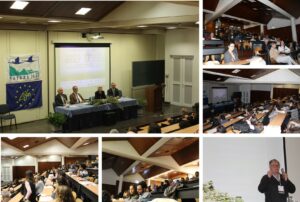 The 1st Seminar of the Life-Relict Project together with the 17th National Meeting of Ecology was held on the 15th and 16th of November 2018, at the University of Évora, promoted by the School of Science and Technology of the University of Évora and in close collaboration with the Portuguese Society of Ecology (SPECO). The event had more than 180 national and foreign participants. The panel of presentations covered four major themes related to the valorization of nature, namely:
The 1st Seminar of the Life-Relict Project together with the 17th National Meeting of Ecology was held on the 15th and 16th of November 2018, at the University of Évora, promoted by the School of Science and Technology of the University of Évora and in close collaboration with the Portuguese Society of Ecology (SPECO). The event had more than 180 national and foreign participants. The panel of presentations covered four major themes related to the valorization of nature, namely:
It also had the presence of a group of veteran speakers who have accumulated decades of experience, such as Professor Angel Penas and Tomáz Dias, from neighboring Spain. Thus, there was the possibility of an exchange of experiences between researchers and students, where Life projects had a special emphasis.
Regarding the Life-Relict project (NAT / PT / 000754), the first results of the interventions carried out were published, namely on improving the conservation status of the paleotropical Portuguese Laurel communities in Açor and Estrela, as well as Rhododendron in Monchique.
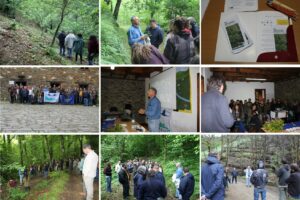 On June 8th, 2018, the Life-Relict project organized, in partnership with the Interpretative Center of Mata da Margaraça, the 1st Technical Workshop in Mata da Margaraça, entitled “Valorisation and Management of Mediterranean Portuguese Laurel”. The day was attended by more than 35 participants representing associations such as Quercus, ICNF, Reflorestar Portugal, Cicytex, the Municipality of Oleiros, Center for Functional Ecology and a group of forest workers. This journey aimed to make known the Portuguese Laurel trees, identify their conservation status and disseminate management practices of this habitat subject to various threats.
On June 8th, 2018, the Life-Relict project organized, in partnership with the Interpretative Center of Mata da Margaraça, the 1st Technical Workshop in Mata da Margaraça, entitled “Valorisation and Management of Mediterranean Portuguese Laurel”. The day was attended by more than 35 participants representing associations such as Quercus, ICNF, Reflorestar Portugal, Cicytex, the Municipality of Oleiros, Center for Functional Ecology and a group of forest workers. This journey aimed to make known the Portuguese Laurel trees, identify their conservation status and disseminate management practices of this habitat subject to various threats.
In the first part of the journey, the Life-Relict project and its objectives were presented. The journey continued with a technical field visit in the heart of Mata da Margaraça, where is one of the best peninsular Portuguese Laurel. The group felt a spirit of sharing among all the participants, who contributed with their knowledge, thus enriching this action. Throughout the day the mystical Mata da Margaraça showed itself to the public in a green and fresh setting by the rain. The result was very positive, at the end of the day the sun gave us the brightness of the flowers of the Portuguese Laurel.
The day was facilitated by the trainers / speakers Carlos Pinto Gomes and Catarina Meireles from the University of Évora.
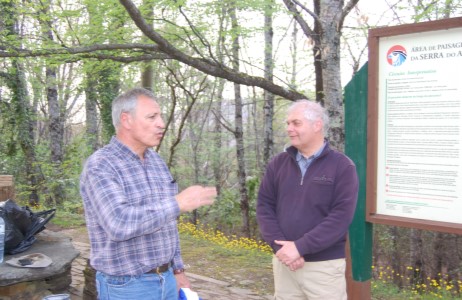
Klaus Peklo, a specialist in bioengineering and a member of the ECOMED project, accepted our invitation and visited the burnt area of Mata da Margaraça. The purpose of this visit was to understand the extent of soil erosion after the 2017 fire and to outline strategies and solutions to solve this problem.
The October 2017 fire affected much of the Mata da Margaraça. Since then, several erosion phenomena have become evident, including several landslides, some of which are large. Bioengineering is a technical-scientific discipline that combines knowledge of engineering and biology, using flora and plant communities in order to protect the soil and infrastructure. The ECOMED project aims to generate a theoretical and practical sectorial program, essential for the specialization process of the Mediterranean Ecoengineering sector. Through this visit synergies and knowledge exchange were created between these two European projects (LIFE and ECOMED), which brought new perspectives and contributions to the management of the Life-Relict areas, but also to the management of Mata da Margaraça as a whole.
In addition to the Life-Relict team, Professor João Almeida Fernandes (University of Évora), Doctors João Boléo and Silvia Neves from the Serra do Açor Protected Landscape (ICNF) and Artur Costa and Alexandre Silva from the Municipality of Seia were also present .
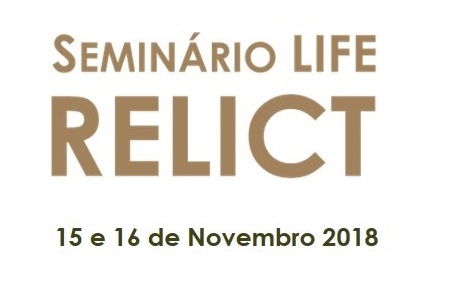
In November, the first Seminar of Life-Relict Project will take place at the University of Évora, which will be held simultaneously with the 17th National Meeting of Ecology.
This scientific event is divided into 4 topics: Major threats to biodiversity conservation; Management and conservation of species and habitats; Ecology, management and planning of aquatic ecosystems, and Monitoring and modelling of habitats in response to global changes.
It will be a unique opportunity to attend lectures in the most important areas of contemporary ecology and to present works in this area. The first day of the seminar (Life-Relict day) is free, but subject to registration.
Register for both days or just on LIFE day at: http://www.speco.pt/pt/encontros/17-encontro-nacional-de-ecologia-seminario-life-relict
The fires of October 2017 burned the emblematic Mata da Margaraça.
Mata da Margaraça, in central Portugal, is considered to be the most notable Portuguse Laurel forest in the Iberian Peninsula. Integrated in the Protected Area of Serra do Açor, it is marked by the enormous beauty associated with a perennial forest, so rare in our country.
Unfortunately, in the fires of October 2017, more than 90% of the area burned, although in many places the fire was of low intensity.
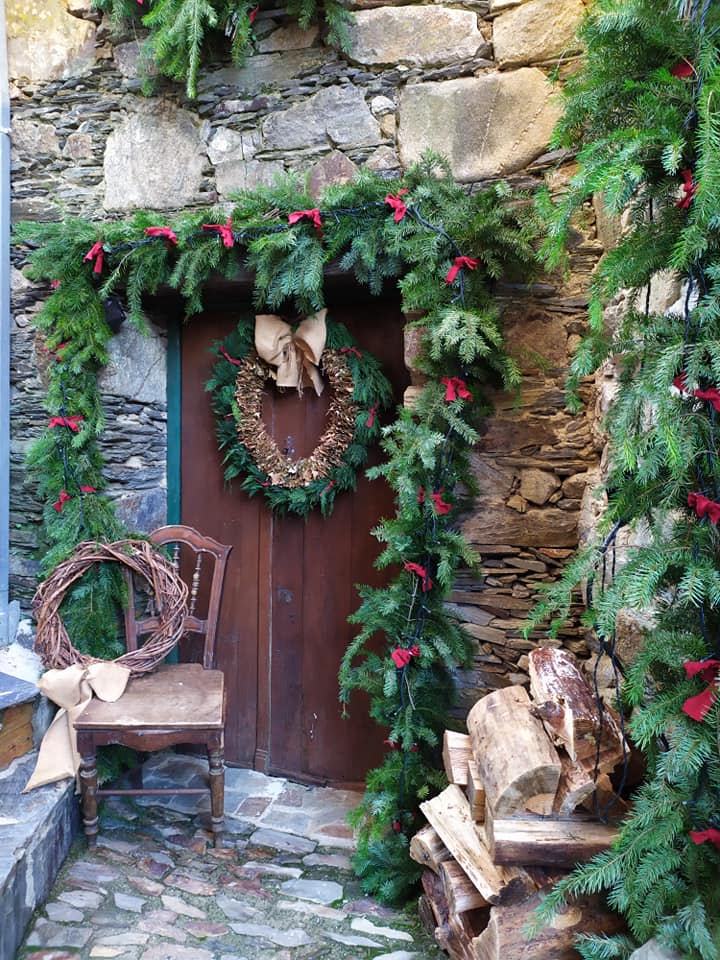 Every year in the picturesque village of Cabeça, in Estrela Mountain, Christmas is celebrated in a unique way in the country. The traditional schist houses are decorated with materials taken from nature and open to visitors. The end result is a village of fairy tales, celebrating what many call the “most genuine Christmas in Portugal”.
Every year in the picturesque village of Cabeça, in Estrela Mountain, Christmas is celebrated in a unique way in the country. The traditional schist houses are decorated with materials taken from nature and open to visitors. The end result is a village of fairy tales, celebrating what many call the “most genuine Christmas in Portugal”.
The Life-Relict project took this opportunity of this event that takes thousands of people to the Cabeça village every year and presented itself to the population and visitors. Thus, an exhibition was set up at the parish council, a short lecture was given by Professor Carlos Pinto Gomes (University of Évora) and a film produced by the Life-Relict team was shown.